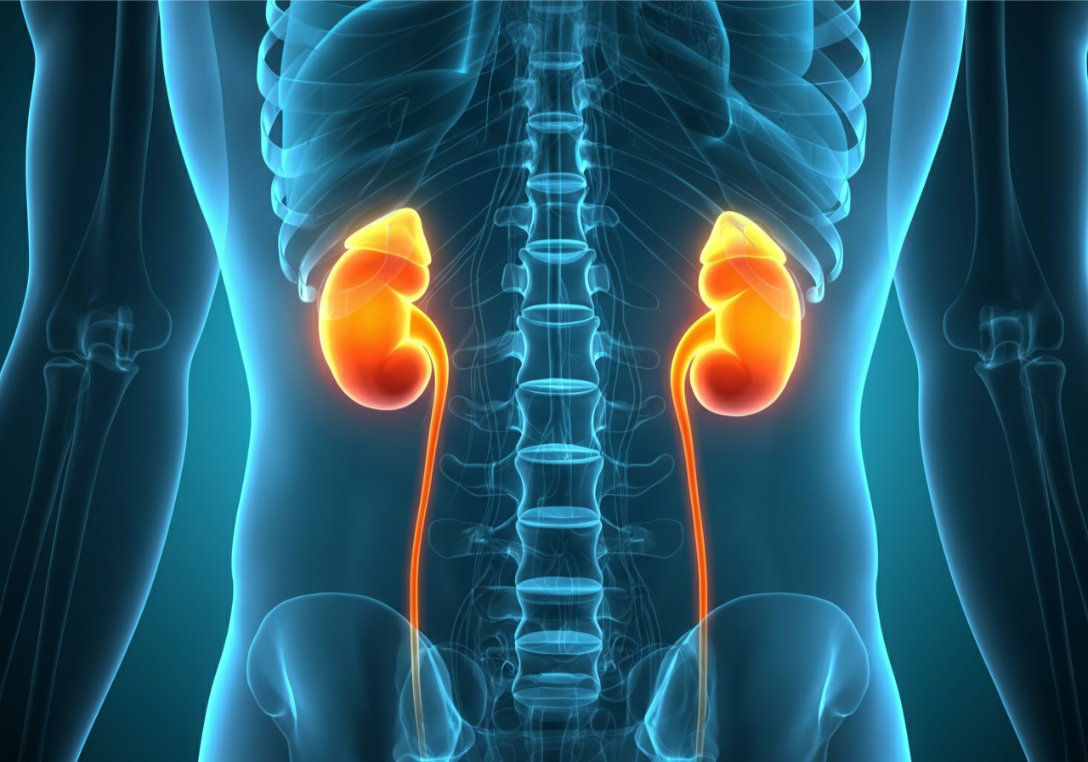Could an Artificial Kidney Be the Future Beyond Dialysis?
 Written By
Yusela Aquino
Written By
Yusela Aquino

Living with kidney disease can be overwhelming, especially when you are juggling dialysis appointments, medications, and constant fatigue. But what if there was another way? What if technology could one day replace a failing kidney and restore your independence?
That is the goal of the artificial kidney, a medical innovation that could one day free people from dialysis and long transplant waiting lists. In this guide, you will learn what an artificial kidney is, how it works, where research stands today, and what it could mean for your future.
What Is an Artificial Kidney?
An artificial kidney is a device designed to perform the main jobs of your natural kidneys, including filtering waste, balancing electrolytes, and managing fluid levels in your body.
Right now, dialysis machines already act as a form of external artificial kidney. But researchers are developing portable, wearable, and even implantable versions that could eventually work inside your body continuously, without the need for external tubes or clinics.
Think of it as a tiny, high-tech filter system that could one day take over your kidneys' vital work 24 hours a day.
Learn more in our guide to at-home liver tests.
Why Do We Need an Artificial Kidney?
More than 800 million people worldwide live with chronic kidney disease (CKD). When CKD progresses to end-stage kidney disease (ESKD), your kidneys can no longer filter blood on their own.
That is when you are left with two options:
-
Dialysis, where a machine removes waste and fluid from your blood.
-
Kidney transplant, where a donor kidney replaces your damaged one.
Both treatments save lives, but they have limits.
The Challenges of Dialysis
If you are on dialysis, you already know the trade-offs:
-
You must spend 12 to 15 hours a week attached to a machine.
-
Your diet and fluid intake are tightly restricted.
-
Access lines can cause infections or blood clots.
-
Your energy may fluctuate between sessions.
Even though dialysis extends life, it does not completely mimic your kidneys' natural, around-the-clock function.
The Challenges of Transplant
A kidney transplant can feel like a miracle, but:
-
There is a shortage of donor kidneys, and many people wait years.
-
You may need immunosuppressant drugs for life, which can raise infection or cancer risk.
-
Some people are not medically eligible for surgery.
The artificial kidney could bridge this gap by offering a third path to kidney replacement without donor dependence or constant clinical visits.
Check your kidney health with our at-home kidney test guide.
How Does an Artificial Kidney Work?

Your kidneys are complex, each containing about a million nephrons, the tiny filtering units that remove waste and reabsorb what your body needs.
An artificial kidney aims to copy this process using a combination of microfilters, living cells, and smart sensors. Here is how:
-
Filtration: Blood passes through a nanoporous membrane that filters out toxins such as urea and creatinine while keeping useful substances like glucose and electrolytes.
-
Reabsorption: Specialized cells reclaim water and nutrients your body still needs.
-
Regulation: The device automatically balances fluid and electrolyte levels.
-
Waste removal: Waste becomes urine and flows into your bladder normally.
The goal is for this process to occur continuously inside your body, powered by your own blood pressure, without external power.
What Types of Artificial Kidneys Are Being Developed?
Scientists and engineers are exploring several approaches:
1. Portable Artificial Kidneys
These are smaller dialysis machines designed for home or travel. They still connect externally but recycle the cleaning fluid, making them more efficient and easier to use.
2. Wearable Artificial Kidneys (WAK)
These are belt-sized devices you can wear around your waist that continuously filter blood while you move freely. Early studies showed that people could walk, eat, and sleep normally while wearing them.
3. Implantable Bioartificial Kidneys (BAK)
This is the most advanced concept so far. Teams at the University of California, San Francisco (UCSF) and Vanderbilt University are creating a device that combines:
-
A silicon nanomembrane filter to remove toxins.
-
A living cell bioreactor that performs kidney-like functions such as electrolyte balance.
The implant is designed to work without pumps or batteries, powered only by blood pressure. Animal studies have shown promising short-term success, and human trials are the next step.
What Are the Main Challenges?

Creating a safe, effective artificial kidney involves solving difficult problems:
-
Miniaturization: Your kidneys filter about 50 gallons of blood daily, so a tiny device must be extremely efficient.
-
Preventing clotting: Any surface that contacts blood can cause clots or immune reactions.
-
Urea removal: Urea is difficult to filter, and researchers are testing new methods to break it down.
-
Cell survival: Living cells in bioartificial designs must stay healthy long-term.
-
Safety: Devices must work safely for years, not just days or weeks.
-
Regulation: Combining mechanical and biological systems makes approval complex and time-consuming.
How Close Are We to a Real Artificial Kidney?
Researchers are moving fast but carefully. Here is where things stand:
-
Wearable artificial kidneys are in early human testing.
-
Implantable devices like those from The Kidney Project are in preclinical stages.
-
Experts predict that first-generation implants could enter human trials within the next five to ten years.
While that may seem far off, progress in medical technology often accelerates quickly once safety is proven.
Could an Artificial Kidney Replace Dialysis?
That is the goal, but the first versions may supplement rather than replace dialysis. They might be used as bridge therapy for people awaiting transplants or as assistive devices for partial kidney support.
Even partial independence from dialysis would greatly improve quality of life.
What Would Life Be Like With an Artificial Kidney?
Imagine:
-
No more long dialysis sessions.
-
Fewer diet restrictions.
-
No need for donor matching or anti-rejection drugs.
-
More energy for daily activities.
Researchers call this vision dialysis-free living. While medical follow-up would still be necessary, the improvement in freedom and well-being could be life-changing.
See our UTI test guide for quick detection tips.
What Are Scientists Doing Now?
Exciting developments include:
-
UCSF's Kidney Project, which is testing an implantable nanofilter and bioreactor.
-
European researchers working on enzyme-based urea breakdown systems.
-
Japanese teams using 3D nanoprinting for miniature blood filters.
-
Labs growing kidney organoids from stem cells for research and potential integration.
-
Artificial intelligence models predicting kidney disease progression.
Each advancement brings the vision of an implantable artificial kidney closer.
What Does This Mean for You?
Even though the fully implantable artificial kidney is still in development, you can take steps now to protect your kidney health:
-
Keep your blood pressure under control.
-
Manage diabetes carefully if you have it.
-
Stay hydrated based on your doctor's advice.
-
Limit salt and processed foods.
-
Ask your healthcare provider about clinical trials.
Is the Artificial Kidney Safe?
Every artificial kidney design must go through three phases of testing:
-
Laboratory studies to show it works.
-
Animal studies to test short-term safety.
-
Human clinical trials to confirm long-term safety and performance.
The U.S. Food and Drug Administration (FDA) oversees these processes through initiatives like KidneyX to ensure patient safety.
Will It Be Affordable?
Early prototypes are expensive, but long-term costs could decrease as production scales. If artificial kidneys eliminate the need for frequent dialysis and hospitalizations, overall healthcare costs could fall while quality of life rises.
What Is Next in Kidney Technology?

Artificial kidneys are part of a broader wave of biohybrid organ technology, which combines biology and engineering. Similar innovations include:
-
Artificial pancreas systems for diabetes.
-
Implantable heart pumps for heart failure.
-
Smart sensors that track health data continuously.
The future may merge regenerative medicine, AI, and bioengineering to create smarter, more natural replacements for failing organs.
When Could Artificial Kidneys Become Reality?
Experts estimate wearable devices could become available in the next five to seven years, while implantable versions may take about ten to twelve years. Each clinical success brings the technology closer to everyday use.
Read our overview on glucose in urine to understand the signs.
The Bottom Line
An artificial kidney could transform life for people with kidney disease by offering freedom and better health. While still in development, rapid progress in science, engineering, and medicine makes this future possible. Caring for your kidneys now helps ensure you are ready for the next generation of treatments.
Want to learn more about your kidney health?
You can take an at-home kidney function test through Ribbon Checkup and get results within days, no clinic visit required.
Related Resources
Want to dive deeper into kidney health? Check out these helpful reads:
-
The Complete Guide to At-Home Kidney Function Tests – Stay on top of kidney health with simple home testing.
-
How Long Do Kidney Stones Last? Must Know – Get clarity on how long kidney stones typically last.
-
What Can Mimic Kidney Stone Pain? – Learn about other conditions that cause similar pain.
References
-
Aguilera, D., de Vries, J., Vollenbroek, J., Noor, N., ter Beek, O., Mihăilă, S. M., Wieringa, F., Gerritsen, K., & Stamatialis, D. (2024). Portable, wearable and implantable artificial kidney systems: Needs, opportunities and challenges. Clinical Kidney Journal, 17(9), sfae259. https://academic.oup.com/ckj/article/17/9/sfae259/7740785
-
Chen, X., Bhatia, S. N., & Searson, P. C. (2023). Feasibility of an implantable bioreactor for renal cell therapy using silicon nanopore membranes. Nature Communications, 14, Article 6707. https://www.nature.com/articles/s41467-023-39888-2
-
“Portable, wearable and implantable artificial kidney systems.” (2023). Frontiers in Bioengineering and Biotechnology. https://pmc.ncbi.nlm.nih.gov/articles/PMC10989479/
-
Ravani, P., Ezekowitz, J. A., Lok, C., & Lok, J. (2022). Wearable and implantable artificial kidney devices for end-stage renal disease. Artificial Organs. https://onlinelibrary.wiley.com/doi/10.1111/aor.14396
-
Roy, S., & Fissell, W. (2023, September 9). The Kidney Project successfully tests a prototype bioartificial kidney. UCSF School of Pharmacy. https://pharmacy.ucsf.edu/news/2021/09/kidney-project-successfully-tests-prototype-bioartificial-kidney
-
Szymanski, J. M., Akalin, E., & Fissell, W. H. (2024). Wearable artificial kidneys: The first choice for portable renal replacement? International Medicine & Nephrology Advances, 6. https://journals.lww.com/imna/fulltext/2024/06000/wearable_artificial_kidneys__the_first_choice_for.9.aspx
-
Watson, A. R., & Goldfarb, D. (2018). Innovations in wearable and implantable artificial kidneys. American Journal of Kidney Diseases, 71(2), 165–173. https://www.ajkd.org/article/S0272-6386(18)30767-4/fulltext
-
Zhao, X., Song, Y., & Wang, J. (2022). The future for end-stage kidney disease treatment: Implantable bioartificial kidneys. Applied Sciences, 14(2), Article 491. https://www.mdpi.com/2076-3417/14/2/491

Author information not available.



